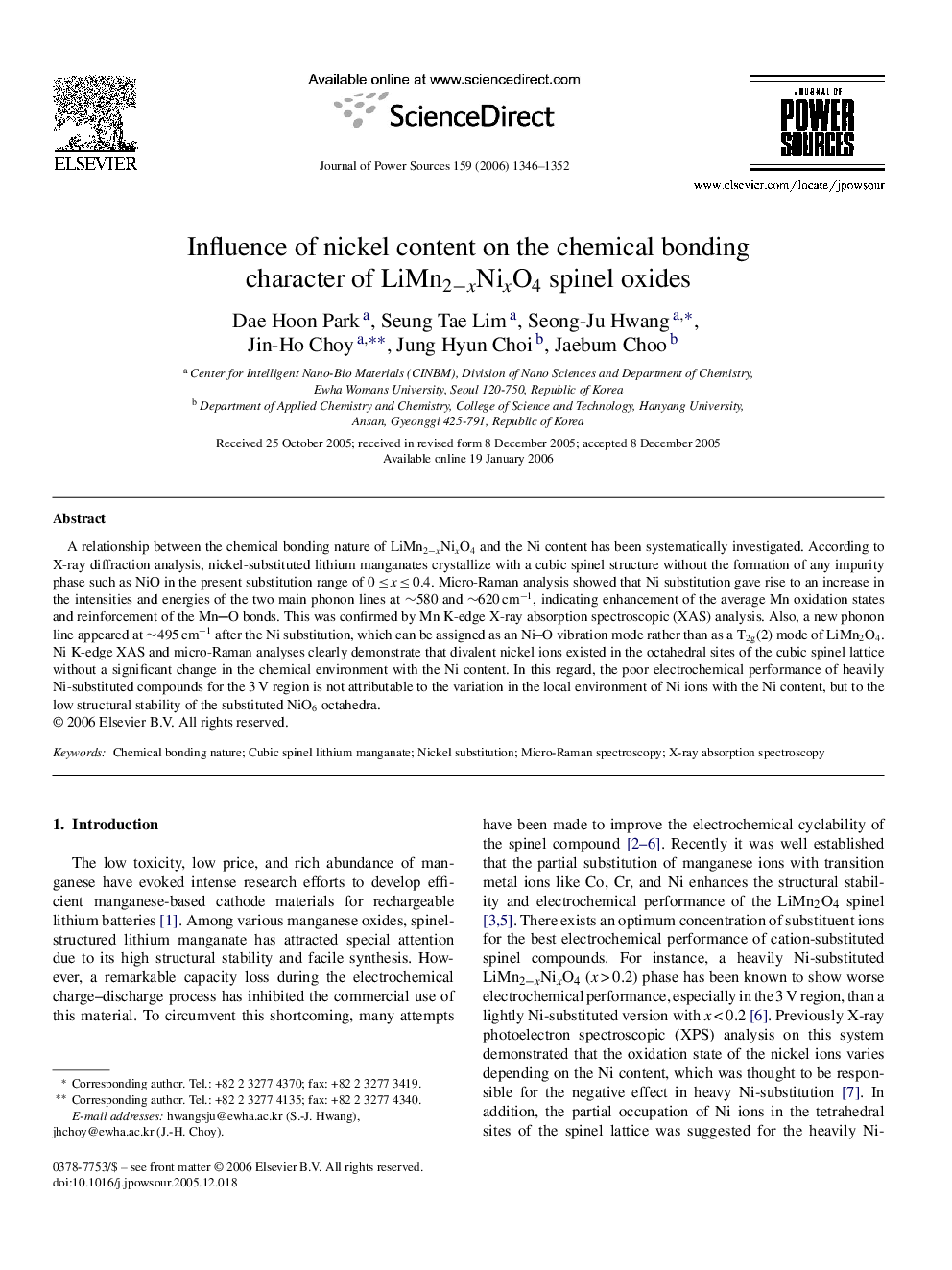| Article ID | Journal | Published Year | Pages | File Type |
|---|---|---|---|---|
| 1287296 | Journal of Power Sources | 2006 | 7 Pages |
A relationship between the chemical bonding nature of LiMn2−xNixO4 and the Ni content has been systematically investigated. According to X-ray diffraction analysis, nickel-substituted lithium manganates crystallize with a cubic spinel structure without the formation of any impurity phase such as NiO in the present substitution range of 0 ≤ x ≤ 0.4. Micro-Raman analysis showed that Ni substitution gave rise to an increase in the intensities and energies of the two main phonon lines at ∼580 and ∼620 cm−1, indicating enhancement of the average Mn oxidation states and reinforcement of the MnO bonds. This was confirmed by Mn K-edge X-ray absorption spectroscopic (XAS) analysis. Also, a new phonon line appeared at ∼495 cm−1 after the Ni substitution, which can be assigned as an Ni–O vibration mode rather than as a T2g(2) mode of LiMn2O4. Ni K-edge XAS and micro-Raman analyses clearly demonstrate that divalent nickel ions existed in the octahedral sites of the cubic spinel lattice without a significant change in the chemical environment with the Ni content. In this regard, the poor electrochemical performance of heavily Ni-substituted compounds for the 3 V region is not attributable to the variation in the local environment of Ni ions with the Ni content, but to the low structural stability of the substituted NiO6 octahedra.
